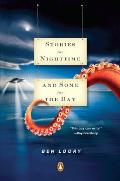 Neil Gaiman's "A Story in Emerald" is a
particularly well-conceived mashup of Sherlock Holmes and the Cthulhu Mythos, which was originally published in Shadows over Baker Street, edited by Michael Reaves and John Pelan. I first learned about it last April when Russell came across a Kickstarter campaign for a board game by Martin Wallace inspired by the story. We were sufficiently intrigued to back the campaign and I used Russell's June birthday as an excuse to buy a book in which the story appeared: New Cthulhu: The Recent Weird.
Neil Gaiman's "A Story in Emerald" is a
particularly well-conceived mashup of Sherlock Holmes and the Cthulhu Mythos, which was originally published in Shadows over Baker Street, edited by Michael Reaves and John Pelan. I first learned about it last April when Russell came across a Kickstarter campaign for a board game by Martin Wallace inspired by the story. We were sufficiently intrigued to back the campaign and I used Russell's June birthday as an excuse to buy a book in which the story appeared: New Cthulhu: The Recent Weird.
Our copy of A Study in Emerald (the game) arrived at Chez Morsie sometime around Christmas, but we hadn't gotten around to playing it so when our friend Michael brought his copy to game night last week, I jumped at the chance to learn the game even though I hadn't read Gaiman's story yet. I read the story today.
The story is set in an alternate Victorian London that should seem pretty familiar to readers. The biggest difference between "A Study in Emerald"'s London and that of Doyle is that Victoria is one of the Great Old Ones, who have been ruling the planet for the past 700 years. Like Doyle's "A Study in Scarlet," "A Study in Emerald" introduces the consulting detective and his narrating companion. There is a murder with which Inspector Lestrade and his team need assistance. At the crime scene "RACHE" is spelled out in the victim's blood, though in this case the blood is green. While I am no expert on the Sherlock Holmes canon, it seemed to me that Gaiman admirably maintained the feel of Doyle's/Watson's writing (though this is helped along by the fact the story's introductory passages mirror that of "A Study in Scarlet"). I liked how Gaiman was able to introduce the backstory of the Great Old One's takeover without having it seem like a tangent. While I enjoyed "A Study in Emerald" as I was reading it, when I finished the story I was thrilled. I can't explain why without spoiling it (I even insisted that Russell must read it himself). There's more in "A Study in Emerald" for Sherlockians than there is for Lovecraft aficionados, but I'd recommend it to both (and especially to readers who appreciate both Doyle's and Lovecraft's worlds).
A Study in Emerald (the game) is built upon the political tensions described in Gaiman's story: the Great Old Ones rule the world, but there is a group of "restorationists" plotting to overthrow them. In the game, which plays 2-5, players are randomly and secretly assigned to either the Loyalist or Restorationist factions. Ours was a 4-player game and I was the token Restorationist; I did not win.
Interestingly enough, per Wallace's design notes, the inspiration for A Study in Emerald was not Gaiman's story but The World that Never Was by Alex Butterworth, a history of anarchism.
I felt that there was enough material her for a board game but was note sure about the reception it would receive. I had this feeling that some players might object to a game where your main occupation would be going around blowing up various world leaders. It just so happened that I had recently read "A Study in Emerald" which suggested a solution to my problem--turn the leaders into monsters, thus depriving them of any sympathy they may otherwise garner. (Design notes, A Study in Emerald rule book, 16)Not to mention the added cache of both Gaiman and the Cthulhu mythos with gamers. If nothing else, the "A Study in Emerald" overlay was marketing genius. I don't tend to spend much time reading rule books (preferring to have games taught to me) and I would skip over design notes just as I usually skip over acknowledgments in the books that I read. I had Russell dig out our copy of the rule book when I started writing this post because I wanted to read Wallace's justification of his inclusion of zombies1 (and vampires) in the game when they don't appear in the story,2 and that's how I learned about the real inspiration for the game, which I found particularly interesting.
- For what it's worth I was holding my own against in the Loyalist faction until the zombies card was in play. When Dan, who had the zombies card in his card, managed to get his hands on a card that allowed his deck to cycle more quickly, I (and the Restorationist cause) was doomed.
- He justifies zombies because of a real life Dr. Frankenstein-type individual that appears in Butterworth. He has no good excuse for including vampires.

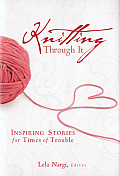 A colleague brought in
A colleague brought in 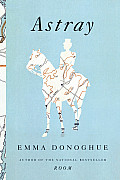 [F]or the past decade and a hlaf, I've been writing stories about travels to, within, and occasionally from the United States and Canada. Most of these travelers are real people who left traces in the historical record; a few are characters I invented to put a face on real incidents of border crossing. Many of them stray in several sense, when in the course of their journeys across geographical and political boundaries they find themselves stepping over other ones: law, sex, or race. Emigrants, immigrants, adventurers, and runaways--they fascinate me because they loiter on the margins, stripped of the markers of family and nation; they're out of place, out of their depth. (Afterword, 263)
[F]or the past decade and a hlaf, I've been writing stories about travels to, within, and occasionally from the United States and Canada. Most of these travelers are real people who left traces in the historical record; a few are characters I invented to put a face on real incidents of border crossing. Many of them stray in several sense, when in the course of their journeys across geographical and political boundaries they find themselves stepping over other ones: law, sex, or race. Emigrants, immigrants, adventurers, and runaways--they fascinate me because they loiter on the margins, stripped of the markers of family and nation; they're out of place, out of their depth. (Afterword, 263)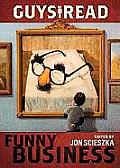 Here it is! Volume 1 [of the
Here it is! Volume 1 [of the 
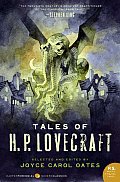 Even though I'm not supposed to be buying books for myself, I did pick up one during this latest blog-neglecting period. When I was book shopping for my nieces and nephews (a post on that topic coming soon) I happened across this deeply discounted title:
Even though I'm not supposed to be buying books for myself, I did pick up one during this latest blog-neglecting period. When I was book shopping for my nieces and nephews (a post on that topic coming soon) I happened across this deeply discounted title: 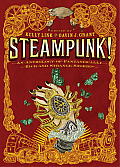 I posted about
I posted about 